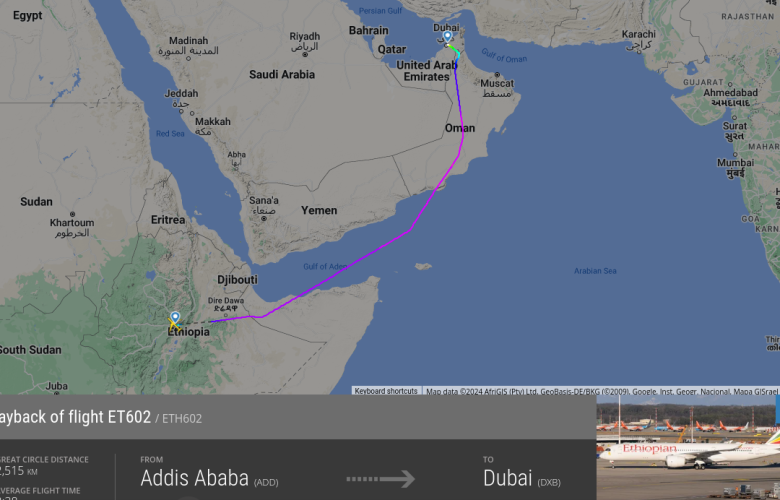A Qatar Airways Boeing 787-8 was cruising over the Gulf of Aden en route from Doha (DOH) to Entebbe, Uganda (EBB). The flight was QR 1383, with the plane having registration A7-BCN. Flying in the opposite direction around the same time was an Ethiopian Airlines Airbus A350-900 flying from Addis Ababa (ADD) to Dubai (DXB). Ethiopian was operating flight ET 602, with the aircraft having registration ET-ATY.
QR 1383 was cruising at 38,000 feet (11,582 meters). As it entered Somali airspace, controllers in Mogadishu instructed the flight to climb to 40,000 feet (12,192 meters). Reports suggest that this instruction was made around 12:32 p.m. local time. Right then, the Ethiopian A350 was cruising at 39,000 feet (11,887 meters), flying in the opposite direction.
Following the controllers’ instructions, QR 1383 began climbing to 40,000 feet (12,192 meters), or Flight Level 400. This maneuver put the aircraft on a collision course right in the path of ET 602.
Thankfully, all modern aircraft have a Traffic Collision Avoidance System (TCAS). This system notifies the pilots if their aircraft is flying dangerously close to another plane and if a collision is imminent. Thanks to TCAS issuing an urgent warning on both aircraft, the pilots could take immediate corrective action, thus preventing a devastating mid-air collision.
The Somali Civil Aviation Authority (SCAA) is investigating this incident, which could have been worse due to a simple miscommunication.
Somalia’s Ministry of Transport and Civil Aviation, along with the Federal Government, have previously expressed concerns regarding flight path disruptions in the northern regions of Somaliland. SCAA has accused Somaliland of allegedly exacerbating these risks by “misdirecting aircraft,” showing the dire need for better communication and protocols within the region’s air traffic control.
Source: AeroXplorer





